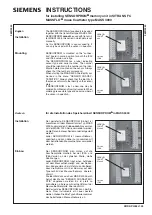
Chapter 5: Management with the CLU
133
Managing Disk Arrays
Disk Array Management includes the following functions:
•
Creating a Disk Array (page 133)
•
Deleting a Disk Array (page 137)
•
Viewing Disk Array Information (page 138)
•
Setting an Alias for a Disk Array (page 138)
•
Enabling Media Patrol on a Disk Array (page 139)
•
Enabling PDM on a Disk Array (page 139)
•
Preparing the Disk Array for Transport (page 139)
•
Rebuilding a Disk Array (page 140)
•
Migrating a Disk Array (page 140)
•
Running PDM (page 141)
•
Running Transition on a Disk Array (page 141)
•
Locating a Disk Array (page 142)
•
Locating a Disk Array (page 142)
•
Creating a Logical Drive (page 142)
•
Deleting a Logical Drive (page 143)
Creating a Disk Array
The CLU provides three methods of creating a disk array:
•
Automatic
– Creates a default disk array and logical drive based on
unconfigured physical drives in the system. No user choices. See “Creating
a Disk Array – Automatic” on page 134.
•
Express
– You select the RAID characteristics and type of application.
Creates a disk array and logical drive(s) based on your input. See “Creating
a Disk Array – Express” on page 135.
•
Advanced
– You specify all parameters for a new disk array. One logical
drive will be made automatically when you create the disk array. If you select
less than the total available capacity, you can use the remaining space to
create additional logical drives at a later time. See “Creating a Disk Array –
Advanced” on page 136.
Summary of Contents for VTRAK M610p
Page 1: ...VTRAK M610p Product Manual Version 1 0 ...
Page 30: ...VTrak M610p Product Manual 18 ...
Page 44: ...VTrak M610p Product Manual 32 ...
Page 47: ...Chapter 4 Management with WebPAM PROe 35 Figure 1 The WebPAM PROe log in screen ...
Page 128: ...VTrak M610p Product Manual 116 ...
Page 184: ...VTrak M610p Product Manual 172 Shutdown complete It is now safe to power off the subsystem ...
Page 274: ...VTrak M610p Product Manual 262 ...
















































